What is Stride?
Stride bus rapid transit (BRT) will provide fast, frequent, and reliable transit service to communities throughout the Puget Sound region. New bus lanes and transit infrastructure improvements will help riders avoid traffic. Stride’s battery-electric bus fleet will run every 10 to 15 minutes, 17+ hours a day, seven days a week! Your Stride experience will be similar to Link light rail, where you can simply show up to a station and expect a bus to show up shortly. This “light rail on wheels” model includes clear and real-time signage, off-board payment, and efficient design. The Stride program will feature three BRT lines: S1, S2, and S3.
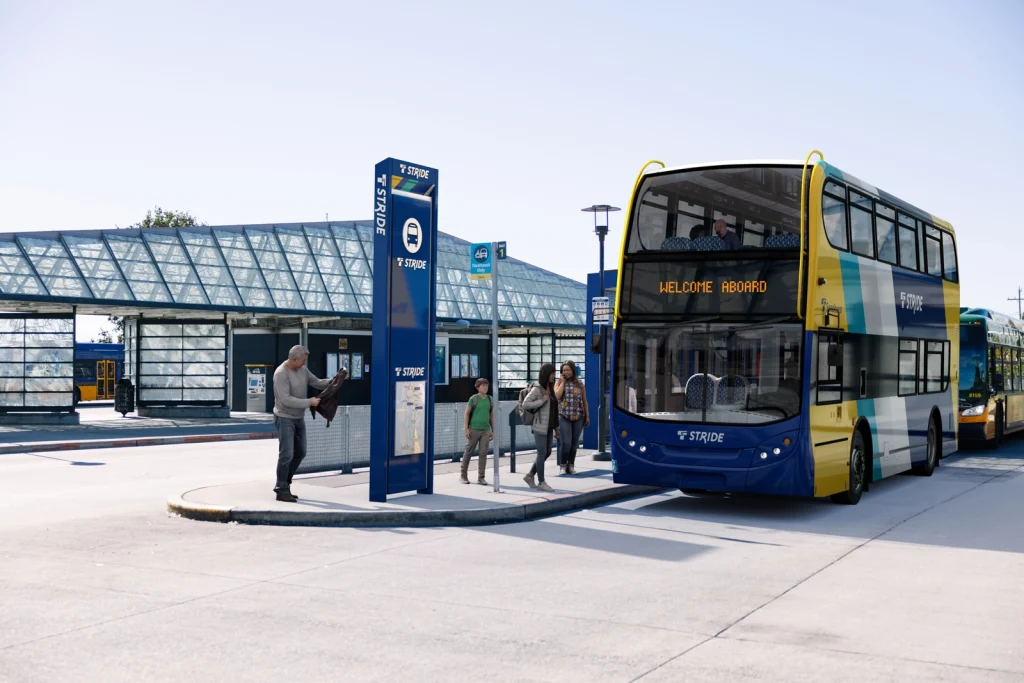
Stride S1 and S2 lines
The S1 and S2 lines will primarily run on I-405 along the east and south side of Lake Washington. The S1 Line will connect communities from Bellevue to Burien, and the S2 Line will connect communities from Bellevue to Lynnwood. Stride riders can transfer to Link light rail at Lynnwood City Center, Bellevue Downtown Station, Tukwila International Blvd Station, and to the S3 Line in Bothell. We are partnering with the Washington State Department of Transportation to deliver Stride S1 and S2 service.
Stride S3 line
The S3 Line will serve growing north Lake Washington communities from Shoreline and Seattle to Bothell. The S3 Line will connect riders to Link light rail at the Shoreline South/148th Station at the west end of the corridor. S3 Line riders will also be able to transfer to the S2 Line, and the whole Stride system, at the new Bothell/Woodinville Transit Center at the east end of the corridor.
Bus Operations and Maintenance Facility
The Bus Operations and Maintenance Facility will support the operations of the Stride system and provide a location to store, clean, maintain, and repair buses. The facility is located within the Canyon Park Business Center on 20th Ave SE in Bothell. This bus base will also accommodate some ST Express buses.
Time saving tools
Stride will offer faster travel times for transit riders compared to current bus routes. Stride buses save time by:
- Using Business Access Transit (BAT) lanes , queue jumps , and express toll lanes along I-405. This creates a cohesive and efficient public transportation system for the region.
- Improving bus movement through traffic signals with transit signal priority .
- Designing Stride stations and buses to allow for quick and easy boarding such as off-board payment , multiple bus doors for entry/exit, and larger platforms to accommodate multiple simultaneous bus arrivals/departures.
- Scheduling Stride buses to arrive every 10-15 minutes to minimize your wait time.
Learn more about the improvements and changes coming in 2028 and 2029
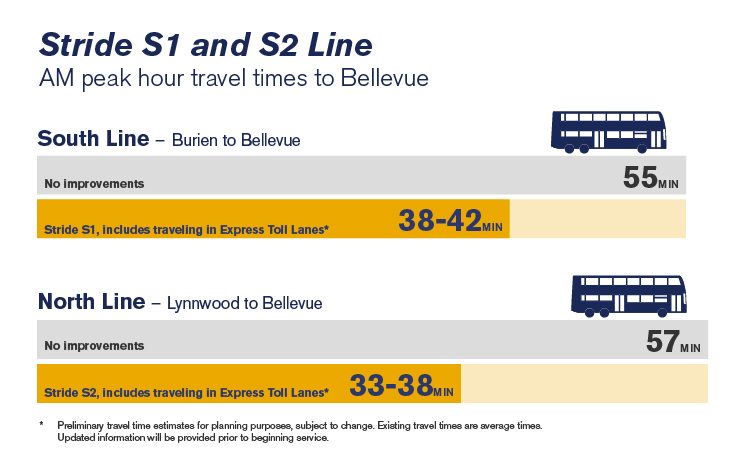
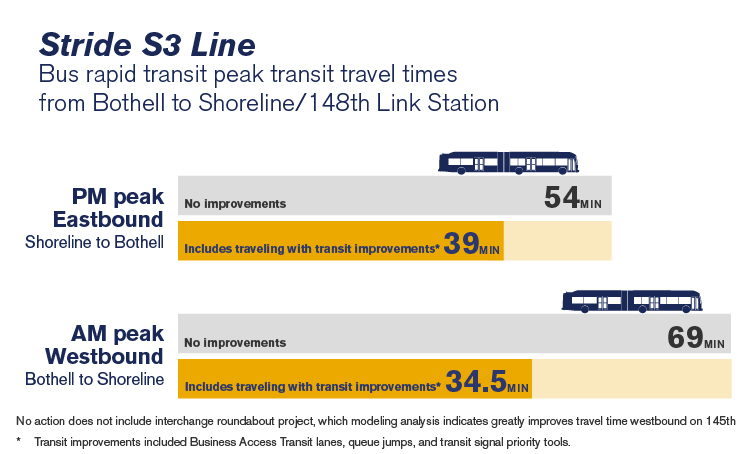
Sound Transit’s first battery-electric bus fleet
Stride buses will be Sound Transit’s first battery-electric bus fleet . There will be a fleet of double-decker buses on S1 and S2 and 60-foot articulated buses on S3. A battery-electric bus will allow for quieter and cleaner operations compared to conventional diesel buses. These buses reduce air pollutants and greenhouse gas emissions, and they even reduce noise pollution because they have no exhaust and vibrate less than conventional buses.
Between trips, buses will park at layover bays at the end of each line to recharge and give bus operators a break. Stride bus layover bays will all have charging pads . Buses will park over the charging pads, which will use induction to re-energize the bus batteries. Stride will be the first program in North America to use this technology for double-decker buses.
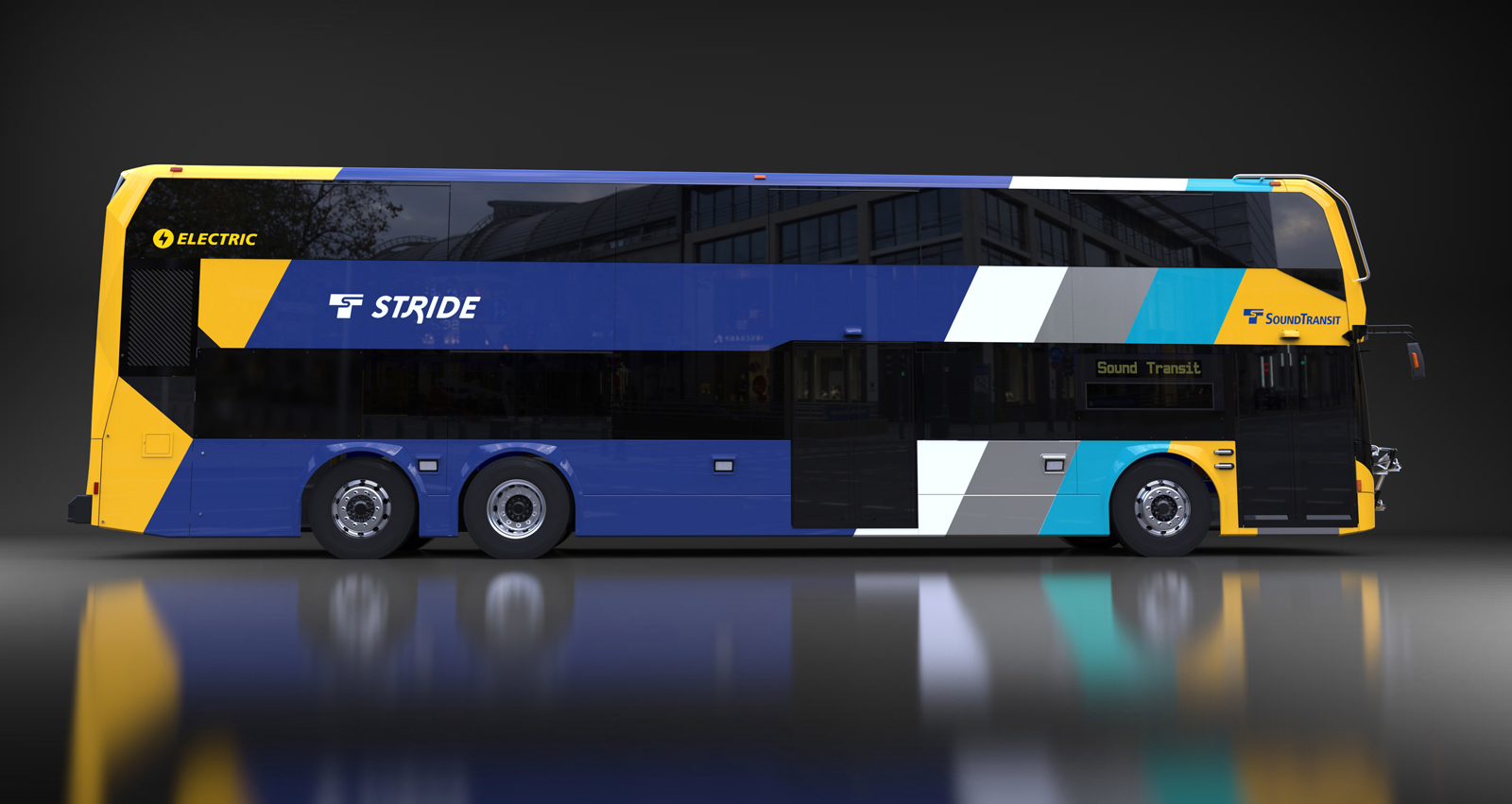
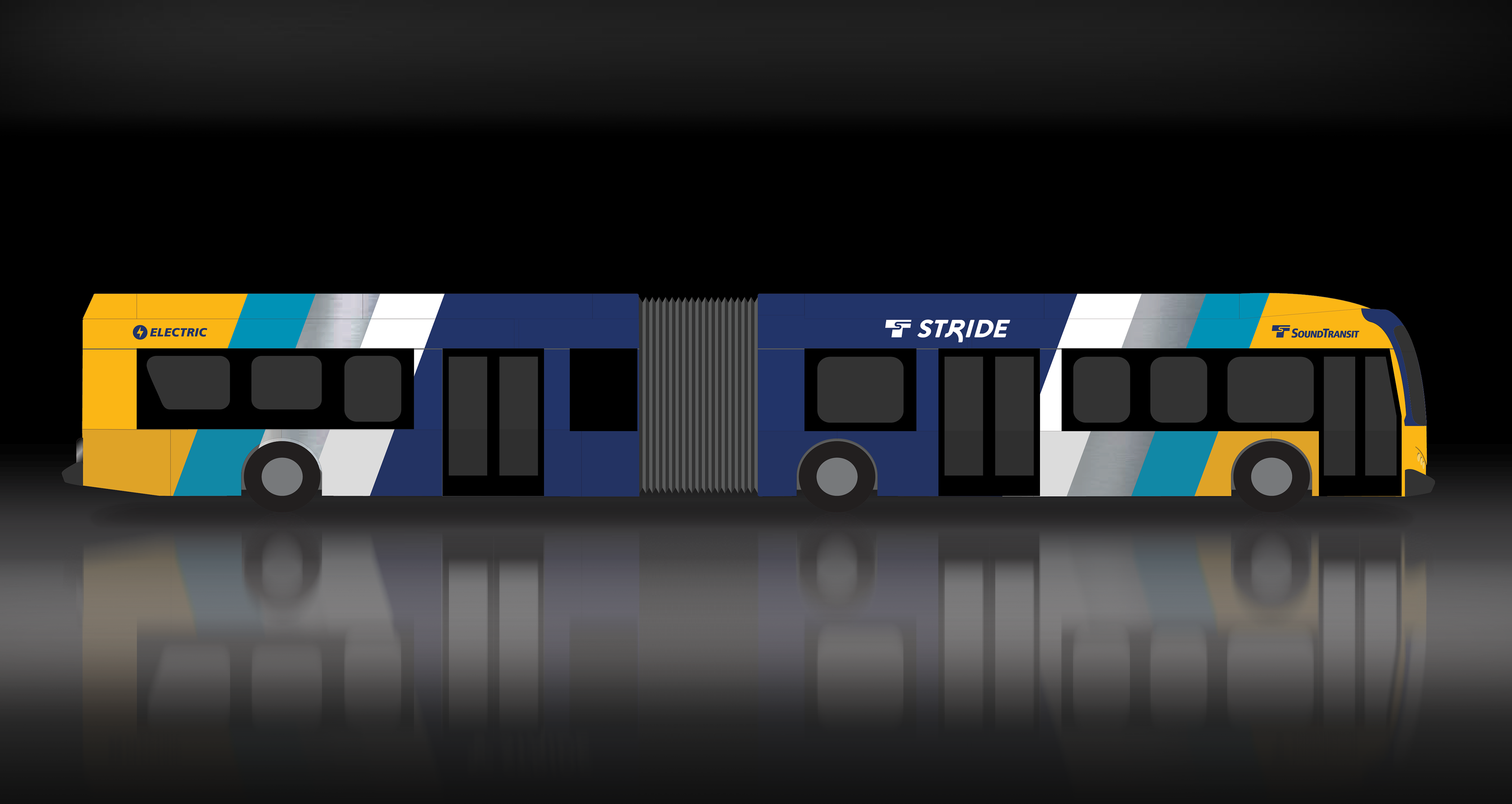
If you’re interested in learning more, check out our battery-electric bus blog post or read our battery-electric bus fact sheet.
